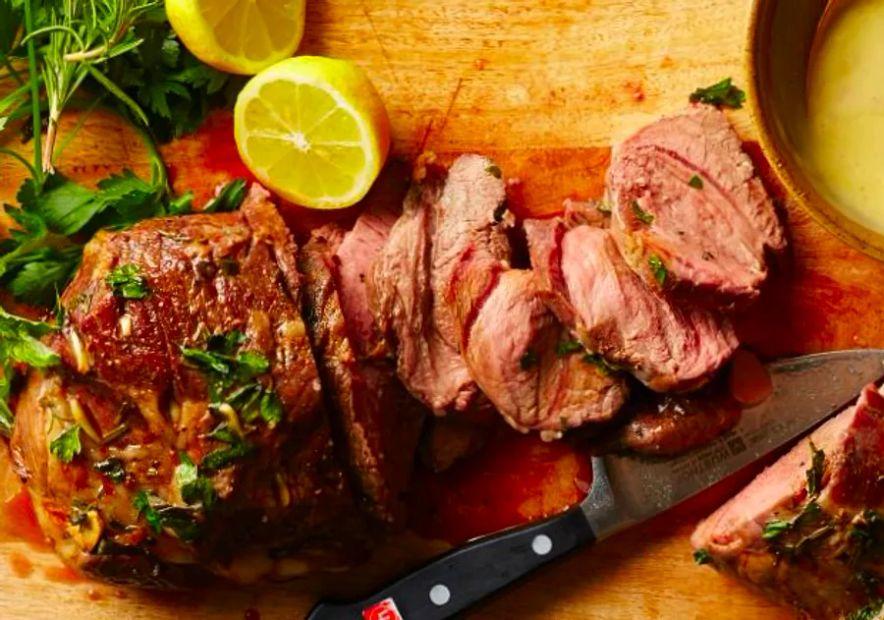How to Achieve a Perfectly Tender and Juicy Roast Lamb Every Time

Discover the key preparation tips and ideal cooking times for roasting lamb that’s crispy on the outside and succulent within. Learn how to select the perfect cuts, season them properly, and master the best roasting techniques.
Selecting the Perfect Cuts
The leg and rack of lamb are known for their tenderness and are perfect for roasting. This 'dry heat' method enhances their natural flavors without the need for added liquid.
For tougher cuts like the lamb shank and shoulder, braising and stewing are the best cooking methods to bring out their full flavor and tenderness.
Leg of Lamb
Leg of lamb can be found either bone-in or boneless. A whole leg typically includes the shank, but since the shank doesn’t roast well, it’s often best to purchase the leg without it. For a smaller cut, you can opt for a half leg, with the butt-end being the most tender and flavorful part.

Rack of Lamb
Rack of lamb is the cut that includes the rib bones or chops. This tender roast is often prepared 'Frenched,' where the meat and fat between the ribs are trimmed, and the bones are scraped clean to create a dramatic, outward-facing presentation. Ask your butcher to prepare it for you and remember to request the meat trimmings for making soup later. When two or more racks are tied together to form a circular shape, it’s called a crown roast.

Seasoning Roast Lamb
Lamb has a natural richness that doesn’t require much seasoning but pairs wonderfully with bold flavors such as rosemary, oregano, marjoram, thyme, lemon zest, cumin, coriander, mint, and garlic.
How to Season Lamb for Roasting
- Trim some of the excess fat and any silver skin;
- Chop up herbs/seasonings and rub the mixture evenly over the surface of the meat;
- Wrap the coated meat tightly in plastic wrap and refrigerate overnight for the best flavor.
A popular method for seasoning lamb is to make small cuts in the meat and insert slivers of garlic and fresh herbs into the slits. You can either do this right before roasting or prepare it a day in advance for a deeper flavor infusion.
When seasoning lamb, avoid salting it until just before cooking. Salt can draw moisture out of the meat, affecting its juiciness.
With this 5-star roasted lamb recipe, there's no need for mint jelly on the side. Chef John infuses mint flavor directly into the crust, and serves the lamb with a slightly sweet vinaigrette instead. Learn how it’s done below.
Roasting Lamb: Ideal Temperatures and Cooking Times
Before roasting lamb, take it out of the refrigerator and let it rest at room temperature for at least 30 minutes. Meat at room temperature cooks more evenly, ensuring a better roast.
Using a roasting rack helps achieve even browning and promotes better heat circulation around the meat.
The ideal roasting temperature and time for lamb depend on the amount of fat on the exterior and the marbling inside. These factors influence both the cooking time and temperature.
- Roast leaner cuts in a hotter oven: A hot oven gets leaner cuts of meat nicely browned on the outside before they become overcooked and dry in the middle. For a lean piece of meat, cook at 450 degrees F (230 degrees C) for the first 15 minutes, then turn the temperature down to 350 degrees F (175 degrees C) to continue roasting — the meat will take about 25 minutes per pound to reach medium rare.
- Roast fattier pieces of lamb longer and at lower temps: For a fattier piece of meat, roast at 325 degrees F (160 degrees C) for a longer period of time, allowing the fat to slowly melt and bathe the roast in its own juices. Meat cooked with this method will take about 30 minutes per pound to reach medium rare.
The most reliable way to check for doneness is by using a meat thermometer.
- 110 degrees F (42 degrees C) is rare
- 120 degrees F (58 degrees C) is medium-rare
- 145 degrees F (68 degrees C) is medium-well
The USDA recommends cooking lamb roasts to an internal temperature of 145°F. Be sure not to overcook it, as excess heat can cause the meat to become dry and tough.

Always Allow Your Roast to Rest
When your roast is about 10°F (5°C) away from its ideal cooked temperature, take it out of the oven. Cover it loosely with aluminum foil and let it rest for 15-20 minutes. This resting period allows the internal temperature to rise further, the muscle fibers to relax, and the juices to redistribute back into the meat, ensuring it’s more tender and juicy when sliced.
Evaluation :
5/5



